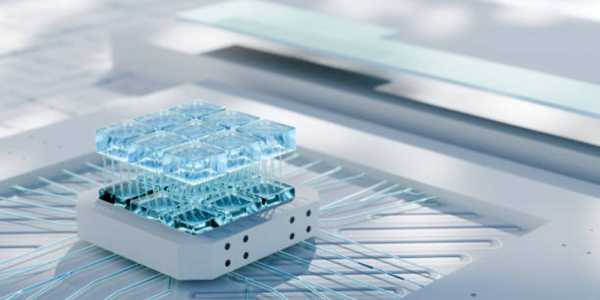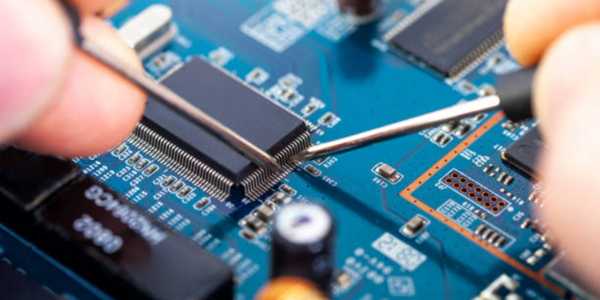The sector of electronics is experiencing a revolutionary change with the introduction of nanotechnology which reconfigures and surpasses conventional designs by developing smaller, faster, and more energy efficient devices. As the daily gadgets need to meet increased standards of performance without increasing its dimensions, next generation electronics based on nanotechnology breakthroughs are sure to deliver better results. Let’s consider the ways in which this small technology is having a great impact.
The New Innovative Scale Of Technology Nanomaterials
Nanotechnology is defined as the manipulation of materials at the level of atoms and molecules from 1 to 100 nanometers. The unusual properties which materials start exhibiting when they are put to use on this scale is quantum effects and the way electrons move through the material changes drastically compared to bulk form. Instead of being a complex theory, this phenomenon opens new features that classical electronics cannot perform.

Silicon-based transistors have driven the development of computer science for decades in conventional electronics. However, issues like the generation of excess heat, leakage currents, and performance variability become worse as we reach the limits of miniaturization. An alternative solution is offered through nanotechnology which allows engineers to build components on the basis of electron tunneling and quantum confinement which not only increase the efficiency of devices, but also their size.
Nanoelectronics vs. Traditional Electronics
One of the most significant benefits of advanced nanotechnology is that it improves the barriers encountered in traditional electronics. Traditional transistors, which are the workhorses of current computer chips, have been fabricated at increases region to perform efficiently. Those advanced nano-electronic devices make use of the unique properties of nanomaterials including carbon nanotubes, graphene and quantum dots to achieve leaps in performance.
Consider the following: carbon nanotubes and graphene possess remarkably superior levels of electron mobility which allow for electron movement at much faster rates when compared to silicon. This elevated mobility helps achieve faster switching speeds while nano-scale transistors are powered, leading to lower power consumption. In addition, due to quantum dots’ optical and electrical properties being tunable based on their size, devices can be created that possess customizable performance characteristics which is not possible with bulk materials, like termed, adapted.
Furthermore, nanoelectronic devices are commonly built using the “bottom-up” technique wherein components are spontaneously assembled from molecular components. This is contrary to the “top-down” method that is used in bulk electronics manufacturing where circuits are engraved on a larger sustaining material. Such an approach increases manufacturing expenses, but it makes so-called waste-free technologies possible – that is, the bottom-up method, which facilitates the construction of extremely intricate wasteful configurations and patterns in structures that are not made from traditional materials.
Consequences for Electronics in the Future
The combination of electronics and nanotechnology will result in a significant change in the overall structure. One important point is, without a doubt, increased energy efficiency. Lower power requirements reduce the heat output of the electronics components, which is critical in high-density integrated circuits. Such enhancements would provide increased efficiency for portable devices and reduced need for cooling in data centers.
One more crucial aspect is the chance for greater effectiveness. Computing devices on the order of a few nanometers can be more densely packed on a single chip, which makes it easier to integrate artificial intelligence, high-speed computing, or even quantum computation.
As the development of nanoelectronic components progresses, the expectation is that there will be more advanced circuits capable of multitasking. Memristors are one such innovation which may enable storage and retrieval systems to surpass anything that exists today by merging memory and processing in a single versatile device.
Trustworthiness is another important aspect that needs to be focused on. The older electronics suffer from the phenomenon of electromigration which is the gradual displacement of atoms caused by a high energy electromagnetic field being passed through a conductor. But nanomaterials have unique structural features, enabling them to resist such degradation. For instance, composite materials of carbon nanotubes and copper have been found to partially retain high conductivity while withstanding the damaging effects of high electro-magnetic fields.

How Innovations are Shaping and Driving the Nano Frontier
The latest achievements over the last few months reveal the immense potential that accounts for the progress in the sector. For, instance, researchers have been able to achieve wafer scale growth of graphene which is a prerequisite for manufacturing electronic devices that are flexible and transparent. In the same way, progress in Plasma Enhanced – Atomic Layer Deposition (PE-ALD) is enabling the accurate fabrication of material layers on silicon wafers, which is crucial for the integration of nanoelectronic devices with semiconductor technology.
Even more intriguing is molecular electronics, where individual molecules perform the function of electronic parts. Scientists are attempting to harness molecular self-assembly for building circuits that exceed the limit of current silicon technologies. This area of molecular electronics is still nascent, but it has the ability to reshape how systems are designed and manufactured at the circuit level.
But just as inventing new components is not all that is possible, major developments in the overall architecture of nanoelectronic systems are taking shape as well. Recent designs feature increased redundancy and self-correcting mechanisms that allow them to compensate for inherent defects at the nanoscale.
In other words, if certain components fail to operate properly, the more sophisticated circuitry design will automatically reorganize to restore functionality. This is extremely important for future electronics that will need to perform under very high power and temperature conditions whilst remaining highly reliable.
Applications in Real World and Its Potential Difficulties
A myriad of industries have already felt the consequences of nanotechnologys advancement in electronics. For instance, in the consumer electronics sector, the presence of nanoelectionic components enables the manufacture of thinner cell phones, more sensitive touchscreens, and devices which use far less power.
In the automobile industry, smaller sized sensors and processors are responsible for the development of more intelligent and efficient vehicles which have advanced driver-assistance systems (ADAS). And even in medicine, nanotechnology-enabled wearable electronics are facilitating remote health monitoring and individualized treatment.
Still, there remains the difficulty of moving out from the researcher lab into commercial production. Investing technology is proprietary and that is what restricts the application of nano electronics devices on a larger scale. Contact resistance between nano devices, wrought material gain, integration with pre established systems, and other technological adaptations call for unique approaches and inter disciplinary efforts.
Lastly, inappropriate applications of nanotechnology can raise ethical and ecological problems as we cross deeper into the nano world. The responsible progress of nanotechnology involves not only major accomplishments on technical levels, but also making certain that these developments are environmentally friendly to humans and nature.
The Nano Revolution and the Future
The journey of nanotechnology in next-generation electronics is starting off. Because of a nanotechnology's capability to surpass the limitations of conventional electronics, it is preparing the world for devices which are smaller, quicker, and more efficient with energy. As the translations from the lab to commercial applications progresses, it’s not far-fetched to imagine a future in which all personal and large scale computers are accompanied by sophisticated nano components.
The electronics industry with it's application of novel methodologies has positioned itself at the forefront of a revolution where performance metrics will be transformed, sustainable development will be stimulated, and technology will reach unparalleled heights. The wrath of the nano revolution possesses the ability to truly change and apply themselves to all aspects of life.





